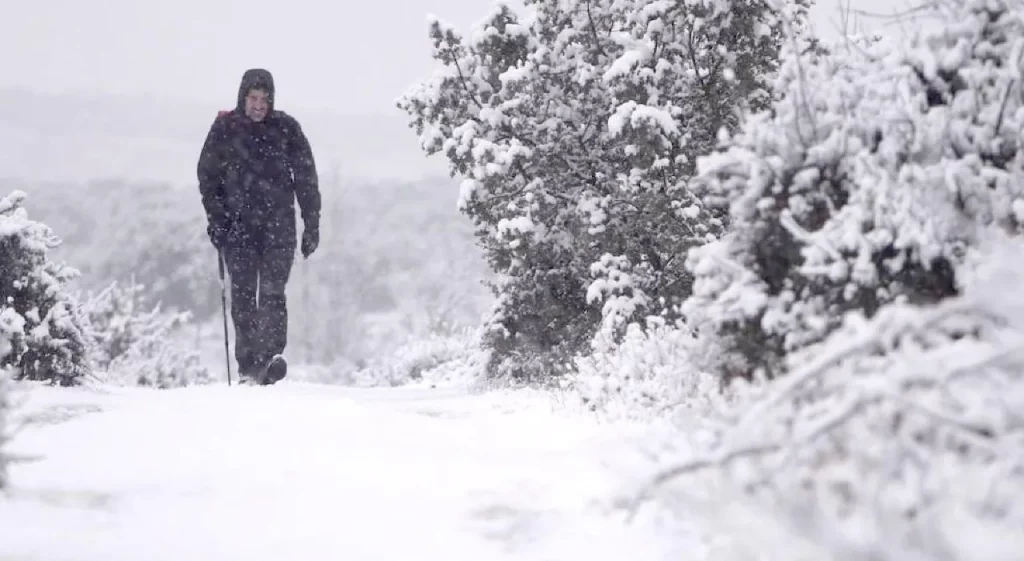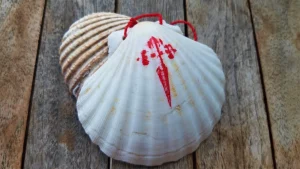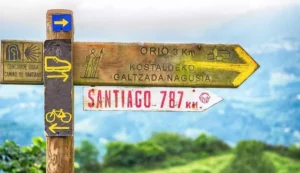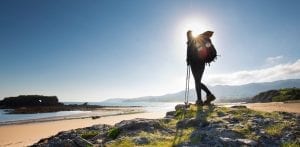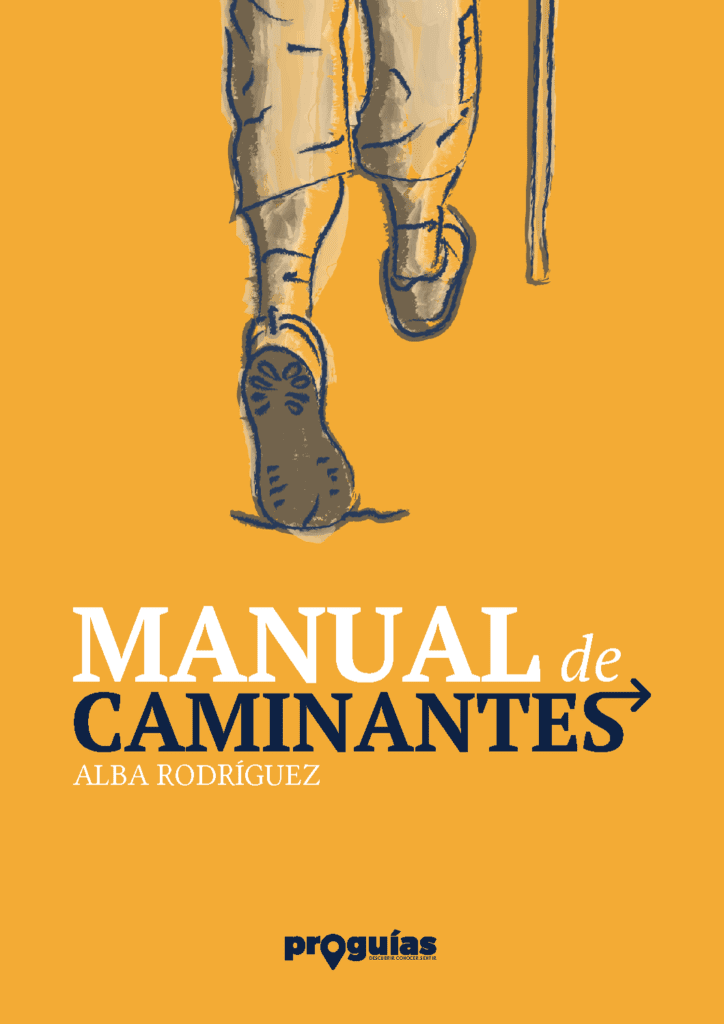Most people do the Camino de Santiago during the summer. It is when they have enough time to embark on the Camino and it is when, a priori, the weather is better to make the most of all that this experience has to offer. However, it is possible to see people walking in winter and, in fact, at any time of the year. Either because they have their days off during these months or because they are looking for a time when there are fewer walkers to enjoy a more intimate experience. In addition, winter offers unique landscapes, clearer paths and the reward of overcoming the added difficulties.
Therefore, in this article we are not going to tell you if you should do the Camino de Santiago in winter or summer. That's up to you. What we want is to give you some ideas about how the situation changes depending on the season and what to expect. So you can decide with more information.
Meteorology
One of the questions we receive most from people who travel with Proguias or simply ask us about their Camino has to do with the temperature and the type of warm clothing to bring. Or if it is better to avoid this or that stretch because of the heat. The quick answer is that, without a doubt, it depends on the time of the year we choose to embark on the Camino. But the truth is that this does not help much. That's why we want to discuss the subject in a little more depth.
The ability of each person to feel hot or cold in certain circumstances is very variable. For this reason, the temperature tables that can be seen in some guides and websites about the Camino de Santiago are, in reality, not very useful. We see in them temperatures below zero and our hopes freeze. But, of course: the clothes we will wear are not the same in summer as in winter. And we will also be making a sustained and significant physical effort. Moreover, at 25 degrees there are people who suffer badly from the heat and others who feel fantastic. The same applies to the cold.
As opposed to "measured" temperature, which is what these tables offer us (through averages obtained from point data), to speak of "felt" cold or heat we use the concept of thermal sensation. This parameter gives an idea of how hot or cold a person may feel under certain weather conditions.
What is of interest here, in any case, is that although in winter the weather conditions are objectively worse than in summer or in the intermediate seasons, lower temperatures and rain need not be a decisive factor in marking our pilgrimage in the calendar. Moreover, in what has to do with the Camino de Santiago, the temperature may be more of a problem in summer than in winter. And here we explain why.
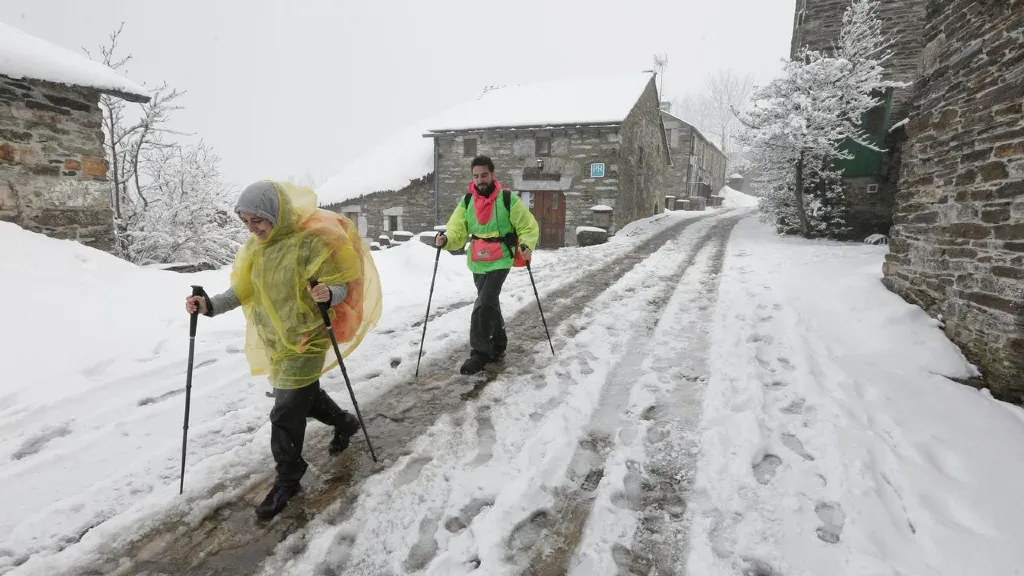
Heat on the Camino de Santiago
In the warm months, the temperature that can be reached on the Camino de Santiago varies greatly depending on the area where we are. The sections that cross the Castilian plateau or the area of Ourense are generally the warmest and can reach really high temperatures throughout the day. So much so that, at times, it is difficult to move forward.
To calculate the thermal sensation due to heat, two parameters are used: measured temperature and relative humidity of the environment. And it is calculated for measured temperatures above 20°C and for humidity above 45-50%, because below that the thermal sensation is practically identical to the measured temperature.
But what does humidity have to do with it? Actually, the feeling of excessive heat is related to the greater or lesser difficulty of the body to perspire. We perspire to cool our bodies, but if the relative humidity is too high, it is difficult for sweat to evaporate, which leads to us feeling hotter.
When we feel too hot, associated symptoms such as fatigue, heat stroke, sunstroke or even cramps appear. This is why it is recommended:
- avoid exposure to the sun in the central hours of the day, trying to start the stages earlier in the day.
- hydrate adequately every 30 minutes
- wear light clothing and try to expose as much skin as possible to the elements to facilitate evaporation of sweat.
The Spanish Meteorological Agency (AEMET) offers a heat index table with the physical effects it causes, and warns: staying in the sun can increase the heat index values by 8ºC. In addition, above 32ºC, wind can increase the wind chill, rather than decrease it.
And now a warning that the AEMET does not give in these tables. Given that the Pilgrims' Roads to Santiago are heading towards Galicia, sooner or later they will enter areas with an oceanic climate, where relative humidity is higher. During the whole month of July 2021, the average relative humidity was above 75% in most measuring stations.
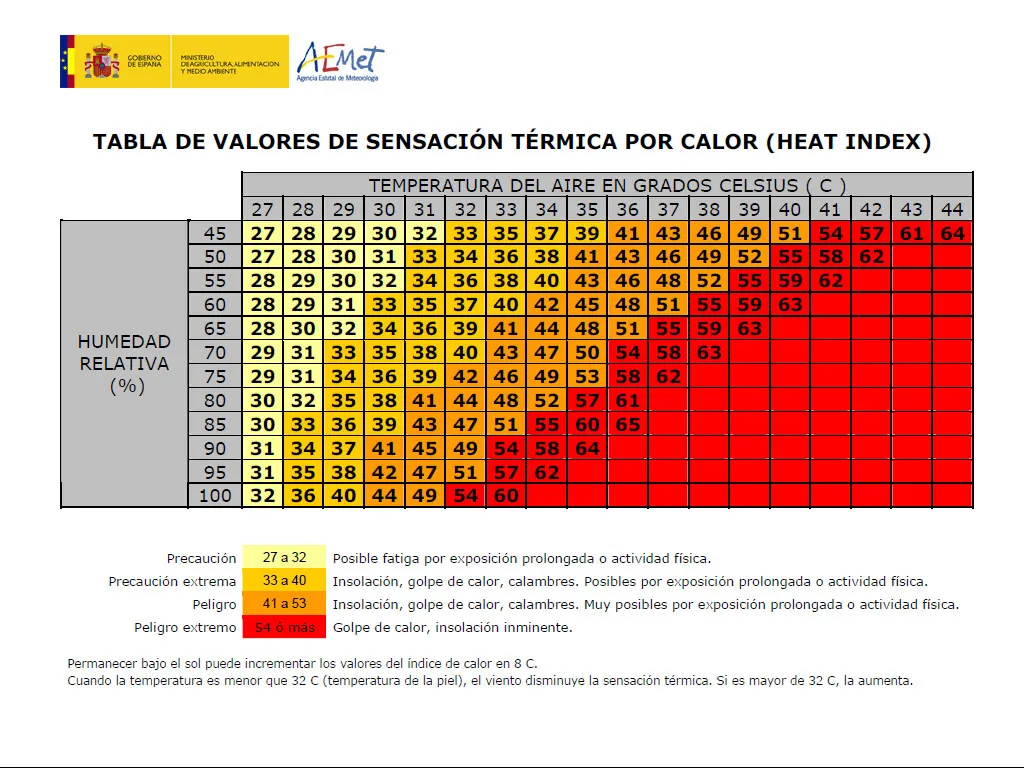
Cold on the Camino de Santiago
The problem of cold on the Camino de Santiago is much less of a problem, even in winter, because the "measured" temperatures are less extreme.
The wind chill is related not to the ambient humidity but to the wind speed. The human body, by emitting heat, warms up a thin layer of air around the skin of a few millimetres. The temperature "felt" is, in this case, higher, because our skin feels the air that is in contact with it, which, as we say, is warmer precisely because of this contact. However, if we are hit by a gust of wind, this layer of warm air is swept away and disappears, and so we feel colder.
In the case of the Camino de Santiago, dangerous low temperatures are much rarer than high ones, even if we do it in the middle of winter. To begin with, only temperatures below 0ºC are considered, which can occur in the early hours of the day or in mountainous areas or in the Castilian plain.
In addition, as one of the basic factors here is wind speed, it is important that people cycling the route take special care. In the absence of wind, a person moving at 30 or 40 km/h is generating a headwind of that speed.
In any case, just as the wind chill from heat only affects uncovered areas of skin (because that is where sweat evaporates), in the case of cold it only affects areas exposed to the wind. This is why it is so important to layer clothing and use windproof coats when necessary.
The AEMET has also generated a table for wind chill. But you only need to glance at it to see that it is more oriented to mountaineering than to the Camino de Santiago, where such combinations of cold and wind speed are very rare.
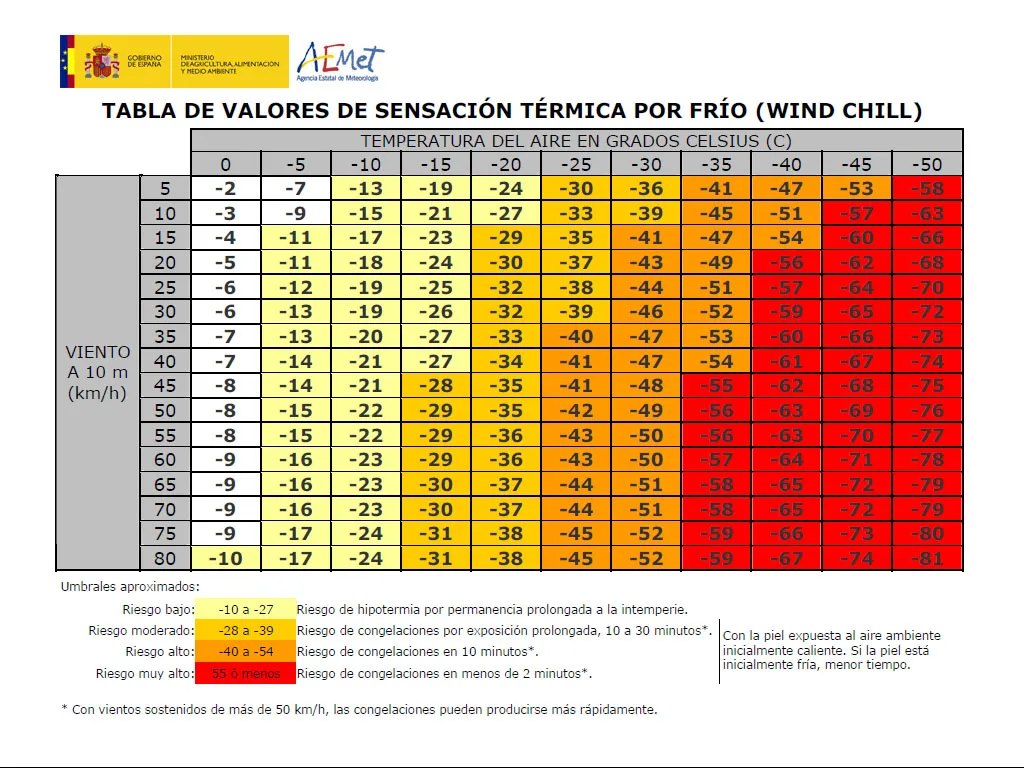
On the other hand, it is true that in winter rainfall is more common, and there may even be snowfall at the higher altitudes of the Camino. But this does not mean that, if you do it in summer, it will not rain. Especially in the last sections, which run through Galicia. The chances of "suffering" rain are high at any time of the year.
In addition, rain can be easily combated with good mackintoshes and changes of clothes. So, as we said, it should not be a decisive factor to choose the time of year in which you will make your Camino de Santiago. Nor to rule out doing the Camino de Santiago in winter.
Services and winter
Another of the fundamental aspects to take into account when choosing the time of year in which we will do the Camino de Santiago are the services available. The logic is simple: as the number of pilgrims drops considerably outside the central months of the year, not all services operate uninterruptedly. In other words: many close at the end of "the season".
Winter travellers should therefore be aware that they will encounter closed accommodation and transport services that do not operate from November to May, for example.
In these cases, having a specialised agency that can anticipate difficulties and offer alternatives is even more important. At Proguías we can help you with that. But if you prefer to do it on your own, our advice is to plan your overnight stays well. You don't want to get to the end of the stage and discover that, in the middle of winter, there is no accommodation available.
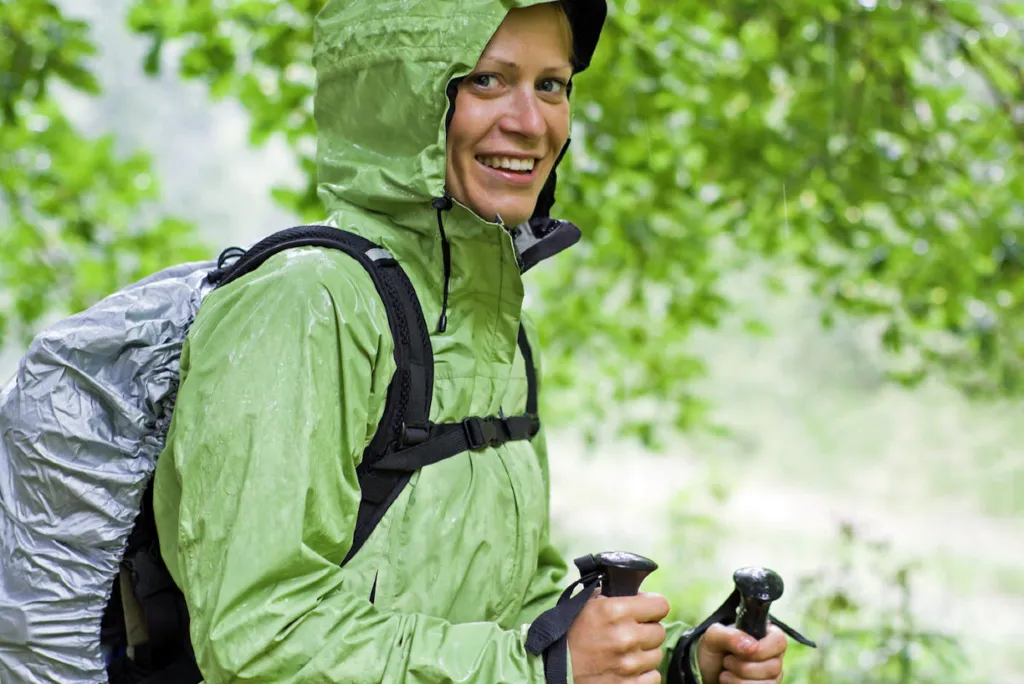
Finally, it is also important to pay attention to the roads. Some are in fact closed in winter. This is the case of the section between Saint Jean Pied-de-Port and Roncesvalles on the so-called Napoleon variant, which goes up the Cize passes. From 1 November to 31 March it is compulsory to take the so-called Valcarlos variant.
Other stretches are not formally closed, but become quite complicated in winter. For example, the one known as the "Hospitales variant" which goes from Borres to Puerto del Palo. The lack of services and the accumulation of snow make it totally inadvisable, unless you are an experienced mountaineer. The alternative is to descend to Pola de Allande and from there climb up to El Palo.
In the past, even the French Way was diverted from Ponferrada by what is known as the Winter Way, whose premise is precisely to avoid the climb to O Cebreiro. Although the O Cebreiro area is nowadays practicable in the hardest months, the Winter Way was so important in previous centuries that it has come down to us as the eternal alternative.


